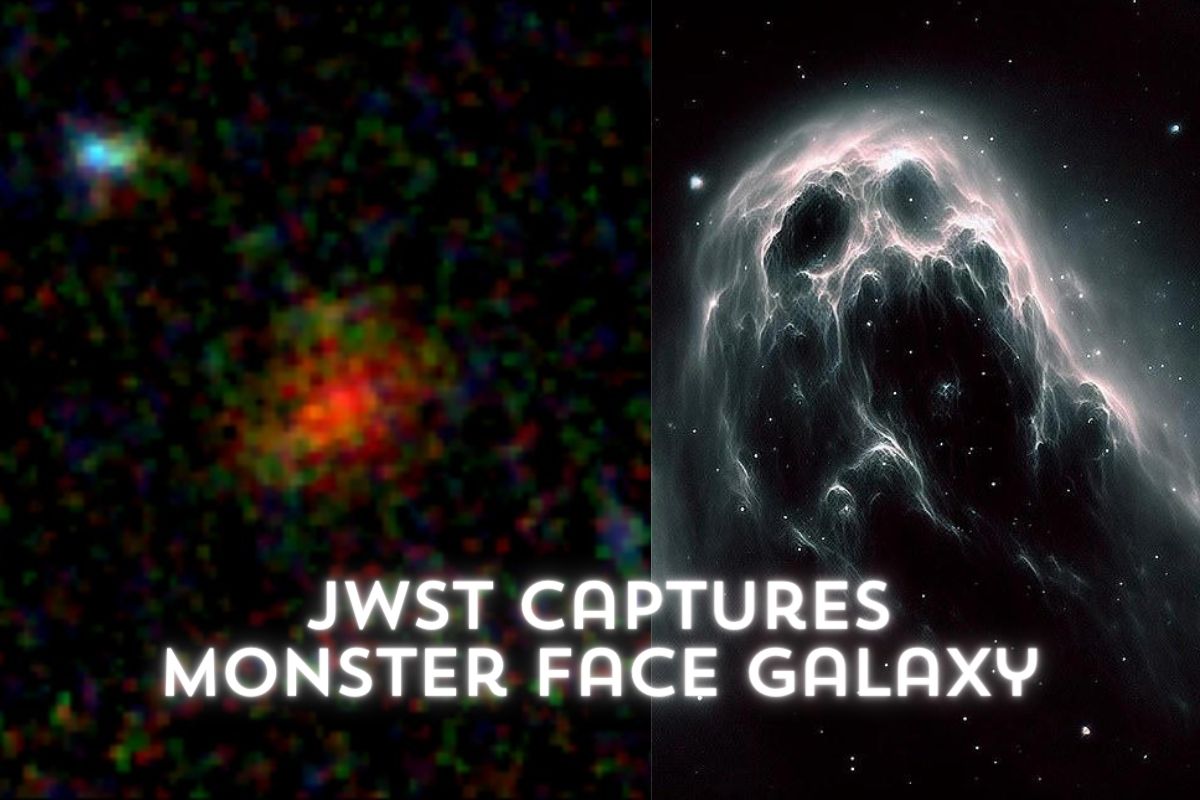NASA’s James Webb Space Telescope captures Galaxy that produces thousands of stars every year in space. The name of this Galaxy is AzTECC71. Galaxy AzTECC71 was formed nearly 90 million years after the Big Bang. This Galaxy was identified by the astronomers at University of Texas. AzTECC71 looks like face of real monster. Monster face galaxy.
Researcher Jed McKinney of UT said that, “This thing is real monster even though it looks like a little blob, its actually forming 1000 new stars every year.
And the fact that even something that extreme is barely visible in the most sensitive imagine from our newest telescope is so exciting to me. It’s potentially telling us there is a whole population of Galaxy that have been hiding from us.”
And artist impression shows the Galaxy AzTECC71 with two eyes and a large open mouth. Actually James Webb Space Telescope images are not real pictures of the Universe. They are all artistic recreations of data visualisations.

This discovery could change scientist mindset of understanding the early Universe, as scientist previously believed that Massive star nurseries where rare. But this Galaxy has showed they might be 3 to 10 times more common in the Universe.
If large dust reservoirs like AzTECC71 are that common in the early universe, it could have “profound implication on early galaxy formation,” the research states.
Galaxy AzTECC71 first detected by ground based telescopes but Hubble Telescope showed it had disappeared. Reason behind this is a thick layer of dust absorbs much of light from dusty galaxies. And emits light with longer wavelength, causes difficult to take photographs of galaxy.
But James Webb Space Telescope has full ability to capture such types of photographs due to it’s infra-red properties.
